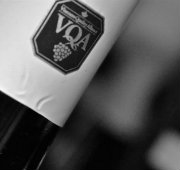
Join OPHA
The OPHA offers many valuable membership benefits. Learn about how to make the most of your membership and to join today!


With longer days and the warmer summer weather, patios are open, cottage season is upon us and the temptation for alcohol is all around us. The following discussion explores the seasonal variation in alcohol sales and other temporal patterns of alcohol use in Canada.
Data from the LCBO in the figure below shows alcohol sales by type between April 2015 and March 2016.1 From the graph below, we can see a similar pattern of sales between wine and spirits throughout the year with a significant sales peak for both types of alcohol during the period of December 6 – January 2 and the lowest dip in sales immediately following that (January 3 – 30). A more gradual second peak in sales for spirits and wine appears in the summer months (June 21 – August 15) but this peak is lower and more dispersed throughout the summer season. Coolers and ciders have a similar pattern of sale which have the highest sales in July and August and another smaller peak in December although much smaller in dollar values.
Sales data from the LCBO for beer is not as accurate of a representation due to the large quantity of beer that is sold from the Beer Store; however, the data below still provides an indication of seasonal variation in beer sales. From the beer curve, we can see that the highest sales occur during the summer months. A more distinct peak also occurs during the Christmas season but the peak is lower than the amount of beer sold during the summer months.

This is consistent with a study conducted by the Centre for Addictions Research of British Columbia (CARBC), which examined alcohol consumption for four beverage groups by season in British Columbia between 2001 and 2006.2 This study found that, among adults 15 years and older, seasonal peaks in consumption differed by product type with beer and coolers peaking in the summer and wine and spirits peaking in the winter months.
Two other Canadian studies focused on the temporal patterns of alcohol consumption among university students. The first examined weekly variation in alcohol consumption and the second examined alcohol consumption as a function of the academic year.3,4 The first study found that, from a weekly perspective, alcohol consumption peaks Fridays and Saturdays 3 while the second study found that students drink more heavily at the beginning of each semester and less during exam periods. This study also found that most drinking occurs on weekends with Halloween, New Year’s Eve, and St. Patrick’s Day being the heaviest drinking days in the academic year. 4
Further research into temporal patterns of drinking could explore alcohol sales in relation to other religious holidays, cultural events, sporting events, and other sub populations besides university students. By obtaining a clearer picture of drinking patterns, targeted intervention strategies could be developed to reduce or prevent alcohol-related harm at a population level.
References
1. Liquor Control Board Ontario. (2016). LCBO Value Sales by Period. Retrieved from LCBO.
2. MacDonald, S., Pakula, B., Zhao, J., & Stockwell, T. (2007). Per adult consumption of alcohol in British Columbia: 2002 to 2005. Mapping Substance Use in BC and Canada: A Report of the BC Pilot Alcohol and Other Drug Monitoring Project, 2007. Retrieved from http://www.nabca.org/assets/Docs/alcohol-consumption.pdf
3. Kushnir, V., & Cunningham, J.A.. (2014). Event-specific drinking in the general population. Journal of Studies on Alcohol and Drug, 75(6), 968-972.
4.Tremblay, P.F. Graham, K., Wells, S., Harris R, Pulford R., & Roberts, S. E. (2010). When do first-year college students drink most during the academic year? An internet-based study of daily and weekly drinking. Journal of American College Health, 58(5), 401-411. DOI: 10.1080/07448480903540465